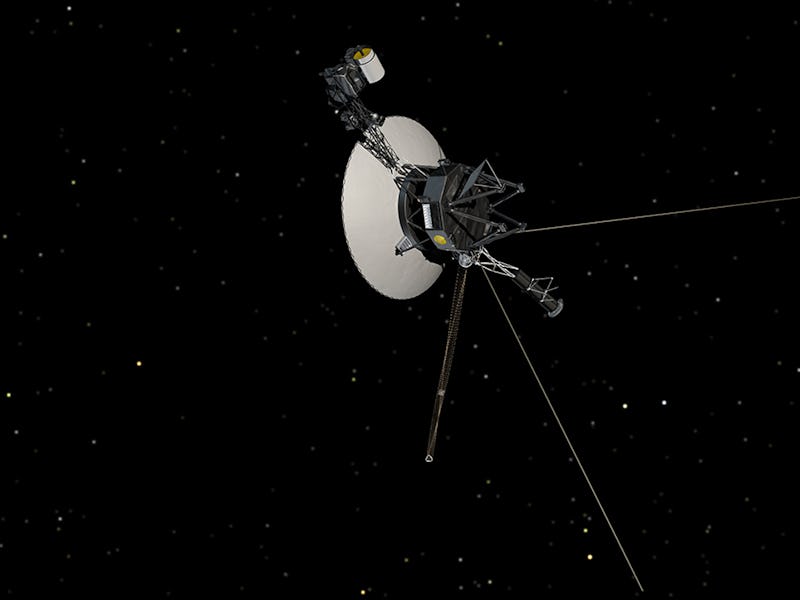When Voyager glitched 11.5 billion miles from Earth, NASA had a plan
NASA started 2020 with a bang.

In January of this year, NASA’s Voyager 2 was journeying through deep space when it suddenly started glitching.
On January 28, the spacecraft experienced a technical malfunction in which its software shut down its science instruments unexpectedly.
Inverse is counting down the 20 most universe-altering moments of 2020. This is number 20. See the full list here.
Working from the ground, NASA engineers had to try fix Voyager 2 while it was 11.5 billion miles away from Earth. Incredibly, mere days later the space probe was back online.
Voyager 2 went black right before it was scheduled for a maneuver in which the spacecraft rotates 360 degrees in order to calibrate one of its instruments onboard. The spacecraft never pulled off the move.
As a result, two of its systems — both of which consume a lot of power — were running at the same time and the spacecraft was using up too much of its available power supply which triggered protection software.
The software automatically turns off Voyager 2’s science instruments when there is a power overload to save on power. After all, NASA can't refuel Voyager 2 — it is just too far away.
To fix Voyager 2, NASA engineers sent commands to the spacecraft which took 17 hours to be delivered since it is literally the furthest man-made object in space. It then took another 17 hours for the spacecraft to communicate back.
The fix was in many ways a feat of incredible patience — NASA’s ground control had to wait 34 hours to ensure their commands were relayed to the spacecraft at all.
It’s sort of like shouting at your computer from another room, except the room happens to be on the other side of the empty void of space.
Patience, however, truly is a virtue.
On February 5, NASA's Voyager Twitter account gave out the good news: Voyager 2 was not only stable, but had resumed its critical science mission.
Voyager 2 began its journey through space alongside its twin spacecraft Voyager 1 in 1977, and both made the jump into interstellar space in 2011 where they traveled beyond the Solar System.
Together, they have transformed our understanding of our stellar neighborhood and are already revealing unprecedented information about the interstellar space beyond the Sun's sphere of influence.
They both still have another five years or so left in them — hopefully no more glitches, though.
Inverse is counting down the 20 most universe-altering moments of 2020. This is number 20. Read the original story here.
This article was originally published on